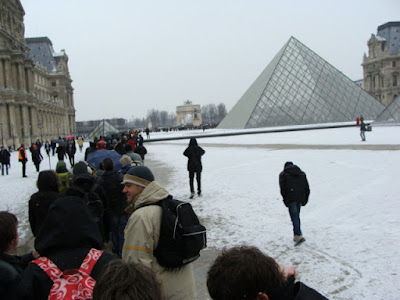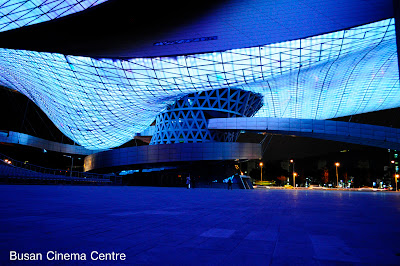Extended weekend you say? That means it's off to Finland!
"A small group of us decided to go visit one of our classmates whom is studying in Finland this term. He and his class were taking a tour of Helsinki the day we arrived and they invited us to come along to see the city.
Some of the highlights of the entire trip were the new symphony orchestra hall with amazing acoustics. The people of Helsinki are quite happy with the new concert hall as it's asthetically pleasing as well as an enormous leap in sound quality from their previous concert hall.
We also stopped at the National Museum of Finland, a work by Eliel Saarinen. The building is a mixture of pieces of famous Finnish castles and churches all in one. The exterior is designed in national romanticism while the interior is mainly art nouveau. The collections range from art through historic artifacts and even old currency.
Had to stop in one of the churches in the area just to see, so we went to Temppeliaukio Church known as 'Rock church' as it's built into a rock outcropping. When approaching the church it's quite humble and doesn't seem like the impressive churches we're used to throughout Europe. However the building changes from seemingly nothing but a rock to an open beautiful and comfortable church on the inside. Recommended if you're stopping off in Helsinki.
One night we were invited to help cook dinner at the Aalto design factory (school) kitchen by one of the students. Amazing facilities with everything you'd want. If you ever wished you could weave a blanket, blow glass, make electronics and talk to people from Australia via video link all in one place all this and much much more is in this one Aalto design factory. I want to bring this place back with me.
But let's not forget about the beauty of the rest of the city and the landscape. This place is truly gifted with wonderful sights of natural beauty with water, rocks, and forest. The city itself is quite modest but quite refined. Buildings here are plainly made with great care in detail and displaying only enough decoration to give it that 'pop.'
After many more adventures we had to leave as the mini-vacation came to an end. Farewell Finland, until next time." -Thomas Homic
This past week, and the weeks previous, have been very educational. Though this is an academic blog, I must admit that the education that I refer to is not directly concerned with architecture. Instead, I learned more about myself, cultures, people and the world, than I did about buildings or urban design. Then again, I may have learned more than I thought. After all, it would be impossible to say that these experiences will not influence my future designs (and influence them for the better). I think this is the point of studying abroad.
Europe is exciting. All of it's countries are filled with adventures and journeys. It feels almost against the rules to be having so much fun, but I have come to realize that twenty years from now, I wont remember the buildings. I will remember the people and the experiences. So, it is in these things that I invest my time and money. Is this a waste of an architectural semester abroad? I definitely think not. Buildings, after all, are just tools. They can be profound in their own right, of course, but isn't the experience of a building more important than the concrete, steel, stone or glass that make up its parts? I would like to think so. So, I will continue to educate myself about life and the experiences that abound on this continent filled with great architecture.
Its easy to be consumed by architecture. Especially in a program as rigorous as NDSU's. The deadlines, projects, papers, classes and studios demand so much of our attention that its east to lose sight of a life that exists beyond the world of design. But, for those of you who are reading this in studio right now, there is hope! It DOES exist!
This semester abroad has established in my mind the importance of Architecture as a tool, as a way to facilitate everything else that life has to offer. Simply put, buildings themselves don't make me happy. It takes so much more! It takes weather, culture, companionship, history, desire, humour, grandeur, even danger to create an experience. I am beginning to understand how small a role Architecture actually plays in the grand scheme of life, and how incredibly difficult it is to influence the emotions or experiences of a person through design.
I am hoping that the pictures that I've included with this post will help communicate my experiences and the things that I have learned. Enjoy! - Dustin Froese
.JPG)
.JPG)
.JPG)
.JPG)
.JPG)
.JPG)
.JPG)
.JPG)
.JPG)




















































